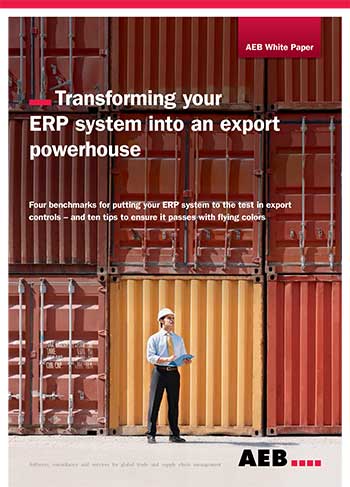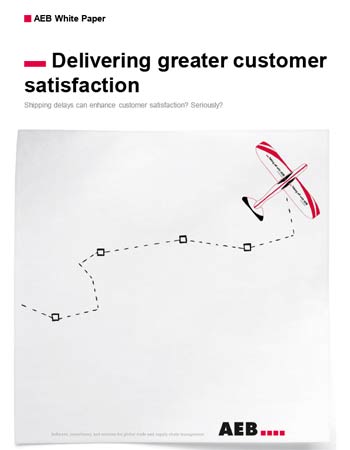Elastic Warehouse Part 4: Bouncing Back - Achieving a Truly Flexible Warehouse


The commitment to an Elastic Warehouse Strategy is the boardroom’s pledge to its 10-year business plan for growth. The strategy, which allows operations the flexibility to bend, grow or shrink in line with the demands of the supply chain, can be achieved by adopting one of the four model approaches referred to in previous chapters; Elastic Overheads, Elastic Outsource, Elastic Tech or Elastic Blend. For most businesses, adopting this strategy will require a significant change, underpinned by scalable technology, which determines how the business operates overall through to how individuals behave and perform their roles.
One thing is certain. The winners will be the ones who get it right first time. This requires strong partnerships with technology specialists as well as a team that is 100% behind the change and enthusiastic about the prospects it brings.
Not to plan is to plan to fail
You have a vision for the future. You know how technology can help achieve the vision. Next step is to understand how you can achieve the vision with as little disruption as possible, in the shortest amount of time, whilst controlling costs, and achieving maximum ROI.
This takes planning. As we explored in the third white paper, “How do you get the Elastic Warehouse from drawing board to reality it’s absolutely vital to understand every small detail of how your business works today and how it will work in the future. This not only determines the technical requirements but informs the implementation plan and the critical path for delivery.
The roll out plan needs to meticulously set out every step that needs to be taken to replace and turn off legacy systems before introducing and switching on new processes and technology. There will be critical dependencies and, to protect business continuity, it’s vital that these are fully mapped out before any work starts. It often pays dividends to involve a supply chain technology expert when planning the roll out process. Not only can they provide insight from previous installations, they can help you plan your strategy with minimum downtime and cost to your existing operation.
When deciding your plan it’s worth building in time for consultation with your customers. There may be areas of your Service Level Agreement (SLA) that can be adjusted while the implementation happens, stock items that must be protected, or indeed areas that you can negotiate knowing that customers will benefit from much greater gains in the future if they are willing to support you through the change.
It’s also extremely important to ensure you understand the technical architecture your customers and suppliers have, and if they can answer the questions as to how they will integrate with your planned architecture. As part of this, you should aim to gather your supplier and customers’ roadmaps so you can anticipate changes they may make and identify how you will support them. This will highlight where you could run into problems if the changes are not planned in partnership.
Having done this you’ll be in a stronger position to understand the elements that really are critical, and prepare contingency and ‘work arounds’ as necessary. This is a good point to take advantage of your technology supplier’s experience and expertise. They should have demonstrated their ability to manage this for you in the tender process so make full use of it now.
For example, in adopting a complete technology driven implementation (the Elastic Tech approach) by mapping out the process you’ll be able to see:
- the systems that can be kept in the Elastic Warehouse and those that need to be integrated
- the systems that can be replaced immediately
- the systems that can be turned off relatively early into the project
- the systems that need to be maintained throughout the duration of the roll out, including the points when you may have two systems running concurrently
- timescales for the new system implementation, allowing for systems integrations, and testing before going live
- who will Project Manage the implementation and champion the system roll out
- the roadmap that follows the initial Elastic Warehouse programme delivery
It’s possible that you may need to make some trade-offs, largely this will be determined by the scale of the programme and the return on investment and business benefits you need to achieve within reasonably short timescales i.e.12-18 months, and those you need to realise in three, five or perhaps even 10 years. You should also bear mind future growth plans, keeping in mind your vision of where you want to be in say 10 years’ time.
Essentially you will need to ask:
- what can we afford to do now?
- what can we afford to do later?
- what has to happen?
Prioritising the project will help you prioritise the budget from technology through to less tangible but highly important elements like training, as well as scope out any physical demands such as warehousing space or equipment purchases.
Make sure you do commit to this process. No company can afford the conversation with customers about not being able to fulfil their demands, especially if it’s a ‘business as usual’ requirement.
Building success
If you follow this approach you will find it much easier to identify the milestones for success. You’ll see the business benefits that every phase of the implementation brings, from picking accuracy and picking times, to volumes of items handled in a 24-hour period. It’s a great asset to have as you’ll be able to use this to set expectations with customers.
As well as the benefits directly related to the warehouse’s efficiency, you will also be able to see how you can gain recognition for meeting requirements beyond traditional SLAs. For example, you may be able to meet different areas of the ISO 22000 family of management and safety standards, from handling, packaging and storage to traceability.
It’s also worth considering how your new operations will meet the environmental agenda that many supermarkets and food producers are using to drive their social responsibility manifesto with the public. Marks and Spencers’ ‘Plan A’ is a good example of a driving force for positive environmental change, and as more government legislation comes to the fore, so many food producers and shops will be forced to follow.
Anticipating the role you can play in helping the food sector achieve its goals will help you stand out from the crowd as these will be factors that influence whether a contract is awarded or not. It’s therefore very worthwhile evaluating how you can achieve the ISO standards such as ISO5001 for Energy Management and ISO 14000 for Environmental Management.
Want more like this?
Want more like this?
Insight delivered to your inbox
Keep up to date with our free email. Hand picked whitepapers and posts from our blog, as well as exclusive videos and webinar invitations keep our Users one step ahead.
By clicking 'SIGN UP', you agree to our Terms of Use and Privacy Policy


By clicking 'SIGN UP', you agree to our Terms of Use and Privacy Policy
Other content you may be interested in
Categories

Want more like this?


Want more like this?
Insight delivered to your inbox
Keep up to date with our free email. Hand picked whitepapers and posts from our blog, as well as exclusive videos and webinar invitations keep our Users one step ahead.
By clicking 'SIGN UP', you agree to our Terms of Use and Privacy Policy









